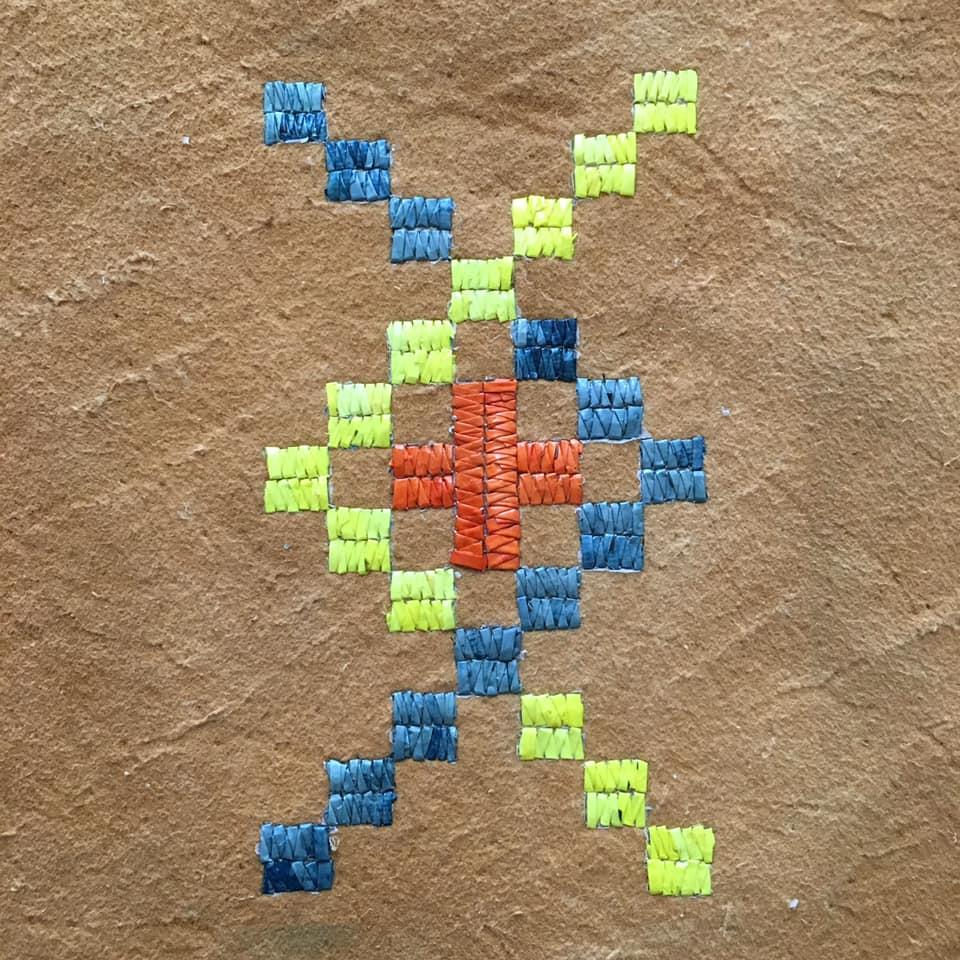June 24, 2020
Class of 2020: Blackfoot artist sees teaching as a means of healing

A Blackfoot artist and dancer who graduates this year with a combined arts and education degree aims to teach Indigenous culture to youth so her traditions can thrive as students enrich their worldview.
Lori Ann Scalplock, BEd ’20, has faced challenges that may have forced other university students to abandon their educational journey, yet she has determinedly pushed forward toward her goal of being a teacher.
The mother of five and her husband, Alex Scalplock, Jr., have worked as a team to raise their children and overcome financial hardships to ensure she can graduate, teach and potentially move on to the next step, which is a Master of Education at UCalgary’s Werklund School of Education.
- Photo above: Indigenous artist and Class of 2020 graduate Lori Ann Scalplock, right, and her husband, Alex Scalplock, Jr., at the National Indigenous Cultural Expo in Edmonton in 2018. They are wearing dance regalia that features her beadwork.
“It has been tough juggling family while being a student, but I could not have done it without having a supportive husband,” says Scalplock. “Family is important to me, and I want to be a good role model for my students. I want them to take pride in themselves and treat others with respect and kindness.”
Art grounded in powwow dances and regalia
Scalplock has applied for a teaching job at Siksika Nation, and she is also applying for the MEd Interdisciplinary Pathway at Werklund, where she would take a one-year certificate program option titled Poo’miikapii: Niitsitapii (Blackfoot) Approaches to Wellness, she says.
I want to support Indigenous education and learn more about my culture. I’m proud to be First Nations and I believe education can be part of healing.
Scalplock and especially her husband are accomplished Indigenous dancers, regularly touring to powwows. Much of her art is grounded in powwow dances and the regalia that dancers wear.
She dances Fancy Shawl and her husband is a prize-winning Chicken Dance competitor. These dances are not simply entertainment, but rather expressions of Indigenous culture and history often specific to geographical regions.
Beadwork can be physically demanding
Scalplock has many years of experience as a beadwork artist and seamstress, applying her skills specifically to the regalia that powwow dancers wear. The regalia can include the dancer’s outfit and accessories, which convey spiritual aspects of the dance, as well as significance for each individual dancer.
The dancing requires the dancers to be in good physical condition, especially during the summer months when there are the most powwows. Even creating the art can be demanding on the body.
“The challenge doing beadwork is that it is so time consuming that it can be hard on the body when you concentrate too hard,” says Scalplock. “Sometimes when I push myself, I have to stop for a few days just to rest.”

Renew, Recycle, 2019, is an example of art made from quillwork on smoked moose hides by Lori Ann Scalplock as part of the Alberta Foundation for the Arts Travelling Exhibition Program.
Keeping traditional Indigenous art alive
More recently, Scalplock, who studied fashion design and merchandising at Lethbridge Community College, has been exploring quillwork, which is a traditional Blackfoot practice using porcupine quills to create art.
“Not many people know how to do quill art and I am trying to keep it alive,” says Scalplock, whose art has been featured in the Art Gallery of Alberta and in the Alberta Foundation for the Arts Travelling Exhibition Program, Nitssaakita’paispinnaan: We Are Still In Control. “I taught myself to do it and I’m always striving to improve my skills and be better.”
Kim Huynh, an associate professor in the Faculty of Arts’ Department of Art, says Scalplock has demonstrated patience, endurance and hard work.
She always sees herself as a young family member and a responsible member of her Indigenous community in all her research projects. Her schooling is the golden opportunity to integrate her experiences in Indigenous consciousness into western knowledge and unique practice and living.
Inclusion and respect important part of teaching
Scalplock’s great-grandmother Margaret Bad Boy, who lived to be more than 100 years old, introduced her to the powwow circle and was a great inspiration to her.
“She taught me how to speak Blackfoot and helped to really ground me in my culture and identity,” says Scalplock, who hopes to teach her own students about the importance of inclusion and respect.
“Systems of oppression that exist but are often hidden and they need to be broken down for First Nations people,” she says. “If First Nations people can start healing and connecting with their culture, we can have healthier families. I am hoping that by being a teacher, I can help with that healing.”
ii’ taa’poh’to’p, the University of Calgary’s Indigenous Strategy, is a commitment to deep evolutionary transformation by reimagining ways of knowing, doing, connecting and being. Walking parallel paths together, ‘in a good way,’ UCalgary will move toward genuine reconciliation and Indigenization.
- Read more: Check out many more profiles of the outstanding members of Class of 2020. And follow the graduate positivity on social media by following #ucalgarygrad






